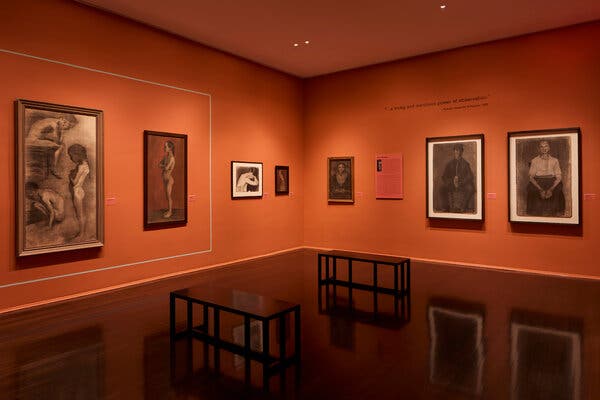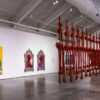An exultant sense of discovery is the propelling through line of “Paula Modersohn-Becker: Ich Bin Ich / I Am Me,” a glorious exhibition at the Neue Galerie that is, surprisingly, the German artist’s first in an American museum. (It will travel to the Art Institute of Chicago in October.)
During a career cut short by her death in 1907, when she was only 31, little escaped Modersohn-Becker’s scrutiny. A paramount subject of inquiry was her own self. For some of her 60 self-portraits, which are her best-known works, she bared all: She is said to be the first Western female artist to depict herself in the nude. In many others, she holds a flower or a fruit, like a saint or a nobleman in a Renaissance painting. Either way, she looks unmistakably modern.
Only a generation separates Modersohn-Becker from Mary Cassatt and Berthe Morisot, who shared her predilection for painting mothers and children. But while the Paris-based Impressionists depicted the bourgeois occupants of drawing-rooms, Modersohn-Becker, who visited Paris devotedly, homed in on the primal.

It was on a visit to the Trocadéro ethnographic museum in Paris in 1906 that she discovered, a year before Picasso, the power of African masks. She was also looking at Courbet, Cézanne and Gauguin. All of these influences converge in such paintings as “Kneeling Mother With Child at Her Breast” from 1906, where a dark-skinned, blocky woman suckles a white infant (might Modersohn-Becker be alluding to the nourishment she derives from African art?), and “Reclining Mother with Child II” from the same year, of a nude woman lying on her side in a fetal position nursing a naked baby.
Those were produced near the end of her life. Yet even at the outset, she showed a gift for channeling traditional methods and tropes to suit her sensibility. In 1898 and 1899, while sketching nude models in the way that art students had done for centuries, she also used charcoal to memorialize the farmers, peat diggers and charity cases in Worpswede, the rural village in northern Germany that she inhabited on and off for the rest of her life.



